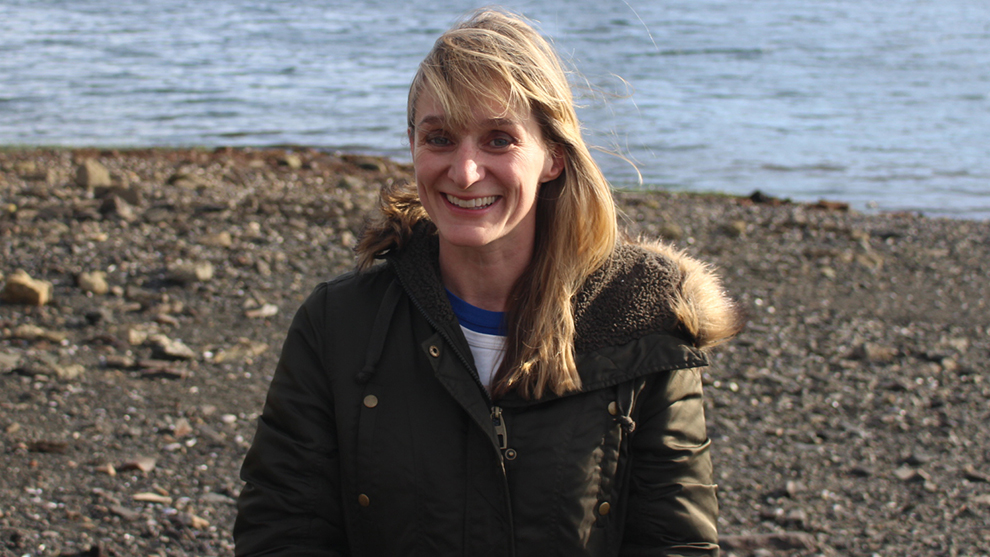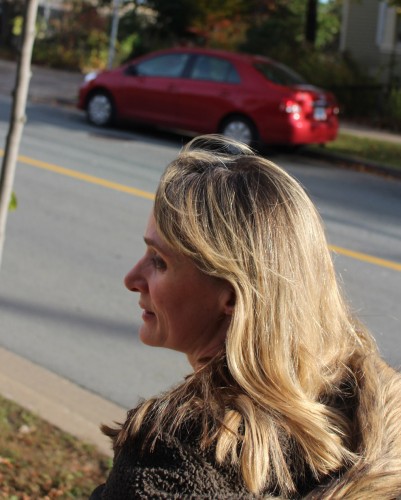Film
The invisible performance

caption
Bower hasn’t left baton twirling behind. Outside of her work, she teaches it to children.
caption
Bower hasn’t left baton twirling behind. Outside of her work, she teaches it to children.When Rachel Bower does her job well, she ceases to exist.
As a documentary filmmaker, it’s her job to enter people’s lives and then convince them to go on as if undisturbed. It takes time, sometimes years, to build up enough trust so that a filmmaker’s presence will be taken for granted.
Bower tells stories and they become her obsession. If they didn’t, she wouldn’t sit on a fishing boat off the coast of Newfoundland fighting seasickness as the fisherman sets out to sea. She wouldn’t spend months in Alberta standing in a field watching farmers struggle against financial ruin and backbreaking fatigue. Those two stories became one in Bower’s hands. In The Same Boat showed the fisher and farmer’s shared fate of struggling to stay afloat in today’s economy. The film won its category at the Silver Wave Film Festival.
Bower’s body language betrays both the athlete and storyteller. She doesn’t sit still, her eyes dart around the room. When something catches her attention, she fixates on it for a moment.
Similar to In The Same Boat’s story of two strangely connected halves, so is Bower’s life: she grew up in the spotlight as a performer, a baton twirler, but now she strives to disappear in order to better tell the stories of others.

caption
Bower’s most recent documentary was an animated short feature on Canadian singer Charlie Chamberlain titled The Singing Lumberjack.Bower began baton twirling because everyone her age was doing it. She wanted to feel a part of something, but as she grew up, she wanted to stand out. She competed at a high level until she was 19, combining gymnastics and dance, always trying to be better.
“I think it was the challenge of trying to get something as perfect as you can get it,” she says. “I think just being so competitive and single-minded in one thing when I was little is why I’m like this now, and why I don’t stop until I get the story, even if it takes five years.”
She was educated in television production in British Columbia and worked in television as a camera operator, editor, writer and director until she began working on independent projects of her own. They have won many accolades and have sent her all over the globe to tell stories about people from all walks of life.
There’s a term in sports: the “Zone.” It describes a state of being where the athlete, even if just for a brief spell, is perfect in her execution. During her performances, Bower experienced it often and was granted the satisfaction that a crowd was there to witness. As a storyteller, that state of excellence exists, too.
“It feels like you’re connected with everyone else and everything else. You’re not really thinking about yourself or conscious of yourself. You’re with everybody else,” she says, her smile widening and lighting up her eyes. “It’s like this amazing dance with somebody. You’re not really thinking about it, you’re just connected”.
When this connection occurs, Bower ceases to exist, and life goes on undisturbed. Life tells its story, and we, through Bower, get to see it happen.
About the author
Mikkel Frederiksen
Mikkel is finishing his Master of Journalism at the University of King's College. He's fond of watching films, and sometimes writes about them...
